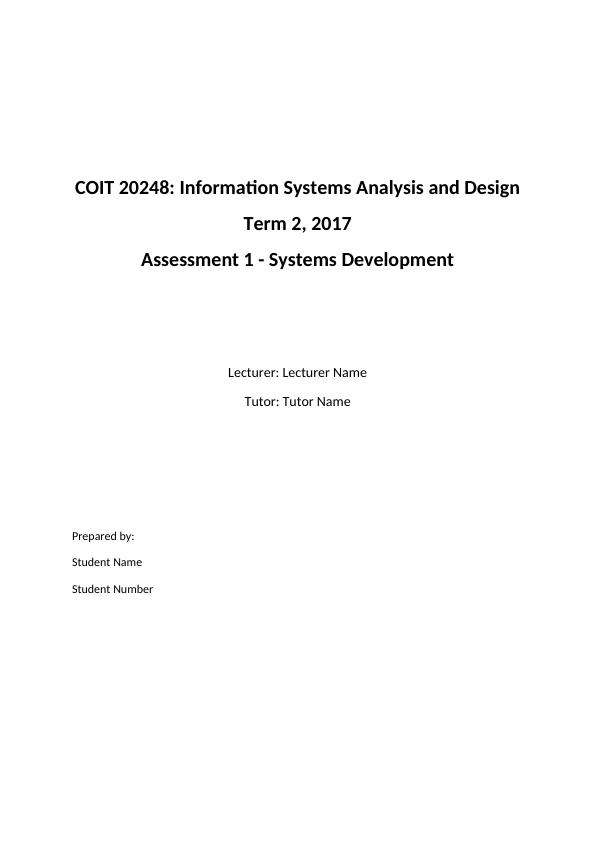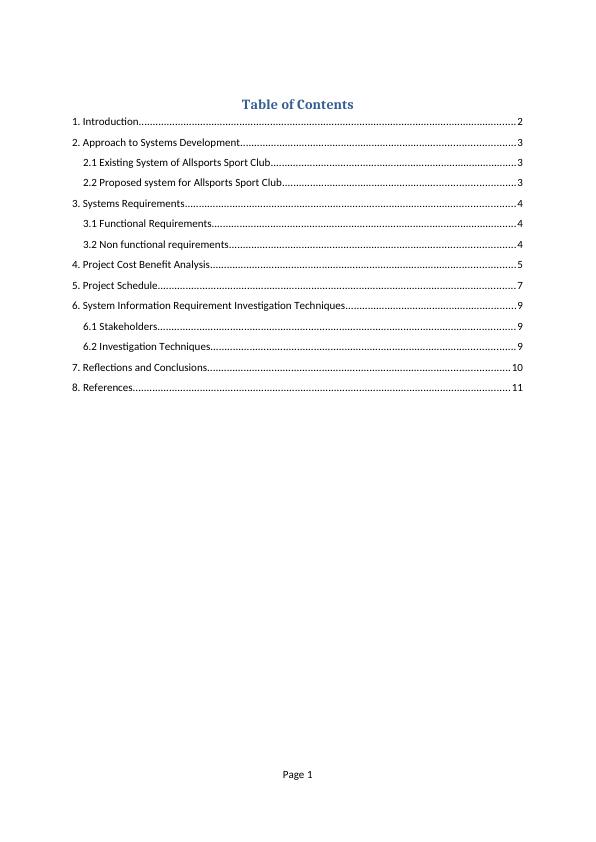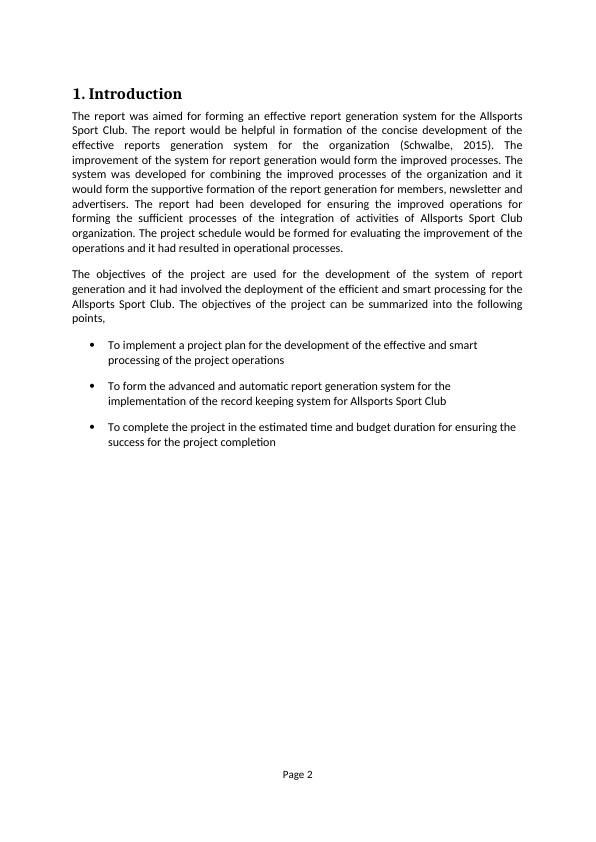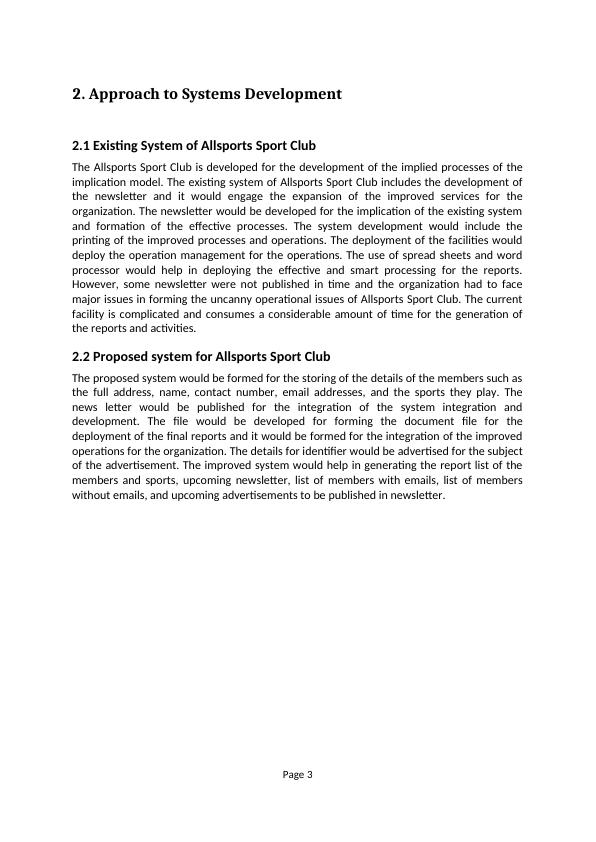COIT20248 - Information Systems Analysis and Design
12 Pages2763 Words64 Views
Central Queensland University
Information Systems Analysis and Design (COIT20248)
Added on 2020-03-01
About This Document
COIT20248 - The report was aimed at forming an effective report generation system for the AllsportsSport Club. The report would be helpful information on the concise development of the effective reports generation system for the organization. The improvement of the system for report generation would form the improved processes.
COIT20248 - Information Systems Analysis and Design
Central Queensland University
Information Systems Analysis and Design (COIT20248)
Added on 2020-03-01
ShareRelated Documents
End of preview
Want to access all the pages? Upload your documents or become a member.
COIT 20248 - Information Systems Analysis and Design Assignment
|12
|2810
|275
COIT 20248: Information Systems Analysis and Design
|16
|2231
|352
Information System Analysis and Design - COT20248 | Assignment
|12
|2073
|43
IT509 | Information Systems Analysis & Design
|12
|1604
|61
COIT 20248 - Information Systems Analysis and Design - Assignment
|13
|2178
|66
INFO6030 - Information Analysis And Design
|13
|2278
|19




